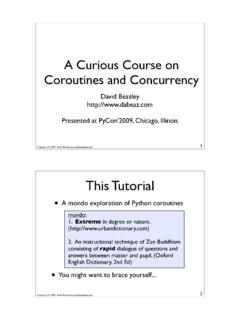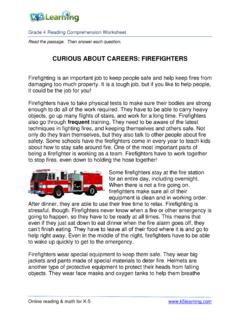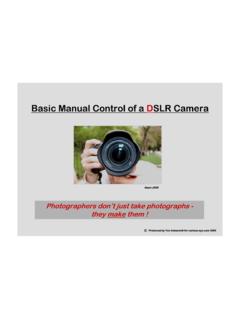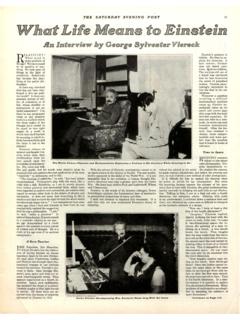Transcription of newborn rabbits detail - Curious Bunny
1 How to Care for newborn rabbits (up to 2 months old). Table of Contents Introduction Make the Nest Box Prepare the Cage Care of the Mother Handling the Newborns Care of the Newborns Problems with Feeding Private Feeding With Mom How to Hand Feed with a Syringe Caring For Orphaned Babies Probiotics & Colostrum Dehydration Medical Transportation Other Introduction This paper gives detailed information on how to care for newborn domestic rabbits ( , up to 2 months old). I work only with foster rabbits and do not breed rabbits myself. Unfortunately, all too often, a newborn litter of rabbits is brought into a shelter, and that's why I care for baby rabbits . Note that I am not an expert. This is simply information I have gathered through the years. Make the Nest Box You may be caring for a female rabbit & not know that she is pregnant. Since a rabbit can get pregnant immediately after giving birth, if you are caring for a mother & litter, when the litter is about 28 days old, she may give birth to another litter.
2 It is very difficult to determine if a rabbit is pregnant. You may be able to feel the baby rabbits inside the adult female. Sit down with a blanket on your lap & quietly hold the mom on the blanket. Pet her calmly so she will sit quietly. Put your hands on her sides (or under her belly, if she will allow this). Hold your hands still for many minutes. Eventually you may feel kicking inside. It's a small push but quick & rather distinctive. If the adult female is pulling her fur or gathering hay into the litter box, although it might be a false pregnancy, assume she's pregnant & make a proper nest box as described in this section. Put her collection of fur/hay into the new nest box. Also supply her with more hay & shredded paper outside of the nest box so she can gather it & place it how she wants it. If she does not have babies a week after pulling fur, you can assume she is not pregnant. If the babies come to you in an appropriate nest box, you can continue to use it.
3 However, if the nest box is inappropriate, make a new one as described below. The mother might build her nest in a dirty litter box. This might happen if her caretaker did not know she was pregnant. This is an example of an inappropriate nest box. Another example is a nest box that's too small or the sides are too low. A clean plastic litter box makes a good nest box. You can also use a wooden box, but it's harder to clean. Or you can use anything that has straight sides & is heavy enough so the mom can't tip it over. A cardboard box lid or cardboard box could also be used, but the mom might accidentally tip it over & they can get smelly. There are also metal nest boxes available commercially. They are ok to use, but might be too cold if not using a heating pad & too hot if you are using one. Having a lid on the nest box makes it harder to check on the babies. For a large rabbit ( , CA, 9 lb), 14 x14 is not big enough.
4 Mom's back feet will be outside of the box while feeding. The nest box should be just a bit larger than the mom. If it's too large, the babies might get separated & get cold or miss a feeding. If the sides are high enough, this will help prevent the newborns from being dragged out of the box if they hang on during nursing when the mother leaves. It will also help prevent the babies from crawling out. If using a plastic litter box, try to get one with high sides. If the sides are too low, or if the sides are high but the front is low, use cardboard that is higher than the sides & use binder clips to attach the cardboard to the sides of the litter box. For instructions on how to do this, see: . You can use soft fabric in the nest box. Soft fabric is: fleece; velour; flannel material (sheet, pillow case or shirt); soft cotton receiving blanket or T-shirt. Do NOT use terry cloth fabric with newborns. They can get their legs caught in a thread that has pulled out & it can cut off circulation.
5 For the same reason, do NOT use any fabric that has loose threads or frayed edges. Do NOT use any fabric that is hemmed with a very loose stitch (or cut it off before use). Also, do NOT use any fabric that has holes in it (the babies can get caught in the holes.) It's handy to use light colored fabric. That way, if there is a diarrhea issue, it's easier to see. Before placing the newborns on any fabric, warm it first in the microwave or the dryer. In the bottom of the nest box, put in several layers of a soft fabric. Do not fold the fabric, as the babies could get stuck in the folds. Lay it flat & then scrunch the sides so it fits in the nest box. This keeps the center flat. Do not cover the newborns with fabric; it might block them from nursing. Use fabric only on the sides & bottom. Instead of fabric, you could also use soft hay, like timothy. Add the hay & make a depression in the back. The depression keeps the babies together.
6 Don't fill the nest box with the hay. If you do, then the babies can crawl out. Use just enough hay to keep the babies together. Transfer the newborns & all nesting material that they came with them into the prepared nestbox, all in one fell swoop. The nesting material often includes the fur that the mother pulled to make the nest. Transfer as much of the fur as you can. You can also add Carefresh Ultra if you want, as it is soft. But the fabric & the mother's fur are generally enough. If the babies are not completely covered by the fur from the mother, add shredded newspaper. Make the shredded paper with a shredder (not ripping up paper by hand, as that usually does not make thin enough strips). Strips less than 12 long are best. Otherwise, they might get wrapped around the babies. In addition, you can also add cotton balls. The shredded paper keeps the cotton balls above the babies. You can also add fake fur that's available commercially.
7 One such product is called litter saver nest filler , by KW cages ( ). Or you can groom the mother & put that fur into the nest box. This will help keep the newborns warm. If the mom is trying to add more material to the nest box ( , she's putting hay into it), put shredded paper into the cage (not the nest box) so she can put it into the nest box as she sees fit. Be sure she has hay or straw available in case she wants to use that. Once you have the babies in a clean nest box, it's best not to disturb the nest until they open their eyes. However, after about 5 7 days, it might get pretty stinky. If that happens, then you should clean the nest box. If you can smell urine/ammonia, it's time to clean the nest box. Do this quickly & re-use as much of the mother's fur & other nesting material as possible. Add shredded newspaper if needed. See Handling the Newborns for information on keeping them warm while cleaning the nest box.
8 Prepare the Cage Put fabric on the bottom of the cage, , a cotton rug or towel. It's ok to use terry cloth fabric here, if there are no loose threads & no holes in it. Keep the litter box clean. Put it in the opposite corner from the nest box. There may be some poop from the mother in the nest box. That's good, as the babies may eat it, which helps to provide bacteria for their gut. However, don't let a lot of poop build up in the nest box. The babies also get good bacteria from eating the cecals from the mother. If the area where the cage is has a temperature of less than 75 degrees F., cover the cage (top, sides & back) with a sheet. This also gives the rabbits privacy. At night, put a small comforter on the top. Keep the sheet on at least until the babies are 10 days old. You can also keep it on longer if you wish. If you get a mom who seems stressed, even if the babies are older than 10 days, & even if the temperature is over 75 degrees F.
9 , you can use the sheet as described above to give her some privacy & help her to relax. If the mom is stressed, she might not feed her babies. If the cage is in a shelter (or other high traffic area), cover all sides with a sheet or towel. This helps prevent the mom from being startled by the hustle & bustle of the shelter. Put a big sign on the cage saying, Newborns, Do Not Clean, or use wording your shelter has approved. The sign is for the regular shelter staff. People who know how to care for the newborns can clean the cage as needed. Put a heating pad, on low, under the cage ( , not in the cage). Place the heating pad so it's half under the nest box. That way the newborns can go to a warmer or cooler spot in the nest box. Some say to use a heating pad only if room temperature is lower than 65, as too much heat can be fatal. It's best when the sides of the cage are solid (as opposed to wire) from the bottom up to about 6 inches.
10 If the babies get out of the nest box, & the sides of the cage are wire, the babies could fall through the wire. If you only have a cage with all wire sides, weave newspaper through the wire to block the sides, up to about 6 inches. If the mom is cage protective or a bit freaked out, put her into a carrier before doing things in her cage. The cage should be in a quiet area, away from noisy adults & children & pets. There should also be no loud noise or music. Keep human activity to a minimum around the cage. Care of the Mother Either at a shelter or in your home, a female rabbit may unexpectedly give birth to a litter. If this happens, the mother will stay in the nest box until all babies are born. She will clean the babies, eat the placenta (even though they are vegetarians) & eventually jump out. Don't confuse eating the placenta with cannibalism. At this point, you should check the nest box. Remove any dead babies & any placenta that is left.





